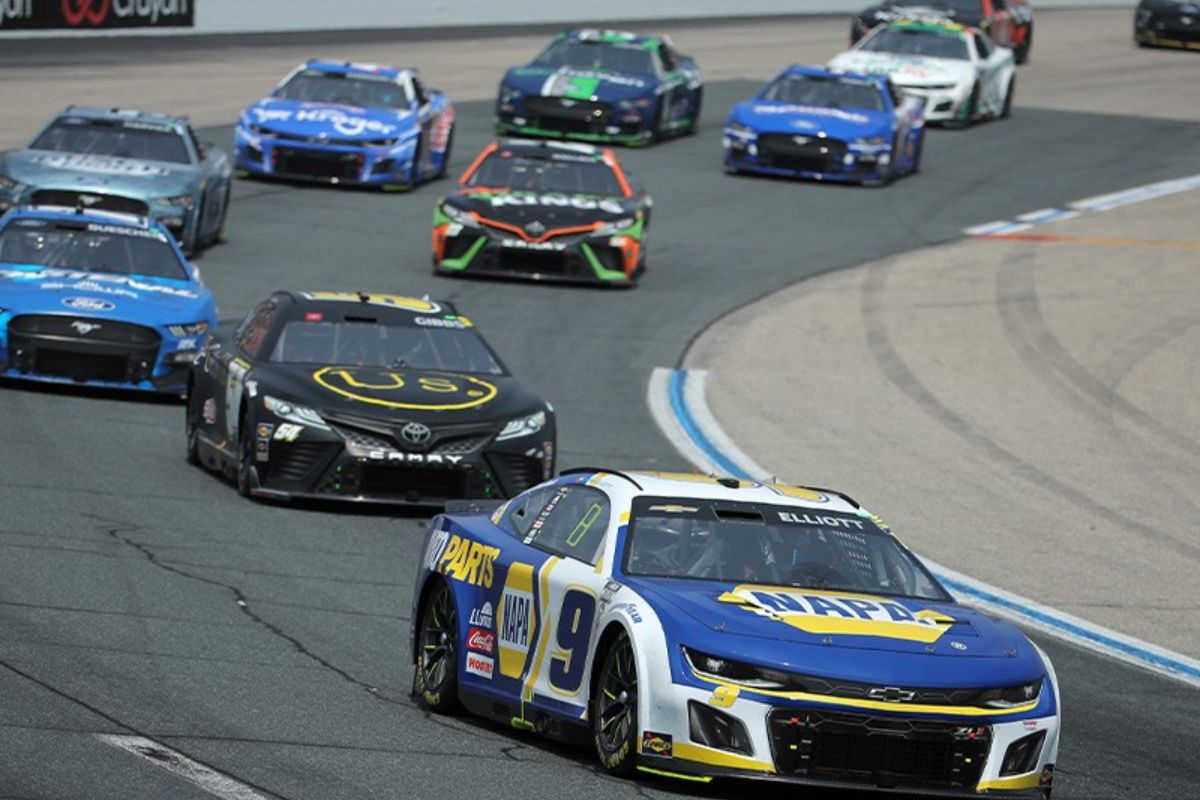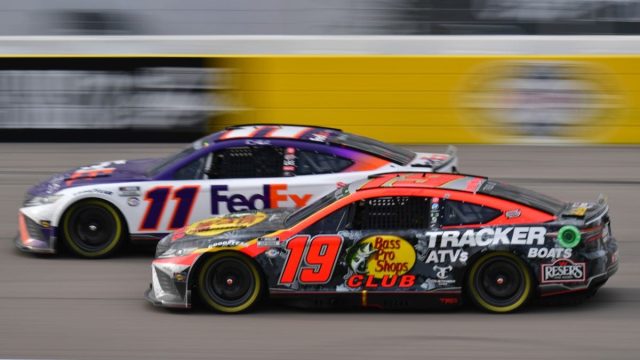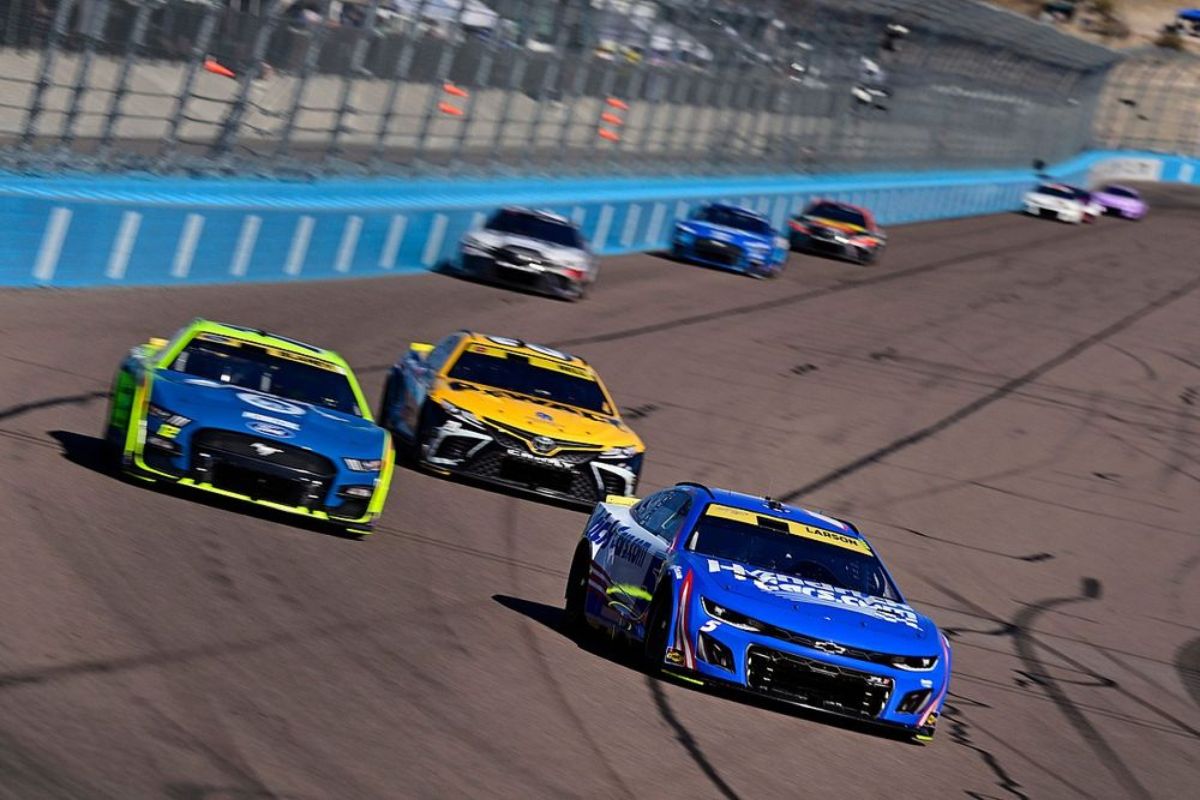NASCAR’s 2025 Cup Series Overhaul: NASCAR’s 2025 Cup Series overhaul represents a tactical pivot aimed at revitalizing the sport’s appeal through the introduction of new tracks, such as the historic Bowman Gray Stadium and Autódromo Hermanos Rodríguez, which marks a notable return to Mexico. Coupled with a restructured playoff format that emphasizes competitive balance through elimination rounds, these developments signify a clear intent to improve viewer engagement. However, the implications of these changes extend beyond mere logistics; that might fundamentally alter the landscape of stock car racing. What challenges and opportunities lie ahead for teams and fans similarly?
Key Highlights
- NASCAR’s 2025 season features new tracks like Bowman Gray Stadium and Autódromo Hermanos Rodríguez, enhancing regional loyalty and global reach.
- The schedule includes innovative race formats and shorter races to improve viewer engagement and competitive balance among teams.
- A revamped playoff structure introduces elimination rounds and a new points system, increasing suspense and rewarding consistent performance.
- Changes aim to heighten excitement for fans through diverse racing environments and increased community involvement at various venues.
- Chase Elliott highlights the importance of balancing optimism with realism in navigating these bold changes for the sport’s future.
2025 NASCAR Cup Series Changes
The 2025 NASCAR Cup Series is poised for considerable transformation, marked by the introduction of two new venues and substantial modifications to the championship-deciding tracks. This overhaul encompasses five notable changes that promises to redefine the competitive landscape of stock car racing.
Firstly, the incorporation of Bowman Gray Stadium in Winston-Salem, N.C., as the host for the annual season-opening Clash exhibition race signifies a nod to NASCAR’s rich history. This quarter-mile short track is renowned for its thrilling, close-quarters racing, and its inclusion is likely to improve fan engagement.
Secondly, the addition of the Autódromo Hermanos Rodríguez road course in Mexico City expands NASCAR’s geographical footprint and introduces a unique racing challenge. This venue will diversify the schedule, appealing to a broader international audience and fostering global interest in the sport.
Thirdly, notable changes to the ten tracks that shape the championship structure will likely alter the dynamics of competition. These modifications could affect driver strategies, pit stop decisions, and ultimately, the championship outcomes.
Fourthly, multiple date changes within the regular season indicates a tactical adjustment to optimize fan attendance and television viewership, reflecting NASCAR’s commitment to evolving with market demands.
Lastly, the cumulative effect of these changes is expected to energize the series, creating a more unpredictable and exciting environment for both drivers and fans similarly. This encompassing approach highlights NASCAR’s intent to innovate while honoring its storied traditions.
Significance of the New Tracks
Incorporating Bowman Gray Stadium and the Autódromo Hermanos Rodríguez into the NASCAR Cup Series schedule marks a remarkable evolution in the sport’s landscape. This tactical decision not only broadens the geographical scope of NASCAR but also reinvigorates its historical roots.
Bowman Gray, often referred to as the “Mad House,” last hosted a Cup race in 1971, representing a crucial return to a venue deeply embedded in stock car racing culture. This reintroduction evokes nostalgia while appealing to long-time fans, positioning the series to tap into regional loyalty and passion for grassroots racing.
On the other hand, the inclusion of the Autódromo Hermanos Rodríguez indicates a monumental leap onto the international stage, marking the initial Cup points race in Mexico in 67 years. As NASCAR executive vice president Ben Kennedy stated, this move reflects a bold ambition to expand the sport’s footprint globally.
“This is a historic moment for our sport, and specifically for the NASCAR Cup Series, in being able to expand our footprint to Mexico.”
“We’ve been bold about our intentions to grow on a global scale.” – BEN KENNEDY
The importance of these new tracks lies in their potential to reshape the competitive landscape of NASCAR. By diversifying race venues, the series can attract varied driving styles and tactics, challenging drivers and teams to adapt to different layouts and conditions.
Changes to Existing Venues
Notable adjustments to the NASCAR Cup Series schedule have emerged as the organization seeks to balance tradition with innovation. As we approach the 2025 season, several existing venues will undergo considerable changes to improve the comprehensive racing experience and align with the evolving dynamics of the sport.
Among the key changes, the removal of the Los Angeles Memorial Coliseum from the schedule marks a notable shift, as it had been a staple for the Clash since 2022. Furthermore, Richmond Raceway will now host only one event, reducing its frequency on the calendar. This restructuring aims to streamline the competition while introducing fresh narratives and rivalries.
Key adjustments to existing venues include:
- Homestead, Watkins Glen, and Atlanta: Each will shift to the regular season after previously hosting playoff races in 2024, allowing for a more competitive environment leading into the playoffs.
- Daytona: The iconic summer race will revert to being the regular-season finale, a move that rekindles historical importance for this storied venue.
- Darlington: This track will once again host the opening playoff race, reinstating its role as a critical crossroads in the postseason.
These changes reflect NASCAR’s commitment by maximizing the competitive landscape while respecting the heritage of its venues. By tactically reallocating dates and formats, the organization aims to energize interest and maintain relevance in a fast-evolving motorsport landscape.

Chase Elliott’s Comments
Chase Elliott recently shared his perspective on NASCAR’s evolving strategies, emphasizing the significance of innovation within the sport. “For NASCAR to branch out, I’ll give them a lot of credit; they’ve been really trying to switch it up over the last few years,” he remarked following the announcement of the Mexico City race. His comments highlight a vital point for NASCAR as it endeavors to attract a broader audience and engage existing fans through diversification of its race venues.
Elliott’s acknowledgment of NASCAR’s efforts highlights a willingness to accept change, a necessity in a rapidly evolving sports landscape. He noted, however, that not all initiatives have been met with success, stating, “I don’t think all of it’s gone great, and that’s totally OK, but they’ve been willing to try.” This frank reflection serves as a reminder of the inherent risks involved in innovation—navigating uncharted territories can yield both victories and setbacks.
“I don’t think all of it’s gone great, and that’s totally OK, but they’ve been willing to try.”- chase elliott
The introduction of new tracks, such as the much-anticipated race in Mexico City, is indicative of NASCAR’s strategy to broaden its geographical footprint. By venturing into new markets, NASCAR aims to resonate with diverse fan bases and capitalize on international interest.
Elliott’s comments, rooted in a blend of optimism and realism, reveal the delicate balance of ambition and pragmatism that NASCAR must maintain as it forges ahead into the future. As the series prepares for this life-altering phase, the insights from its top drivers will play an essential role in shaping the narrative and direction of the sport.
Expected 2025 NASCAR Cup Series Schedule
As NASCAR gears up for the 2025 Cup Series, the anticipated schedule highlights a bold mix of traditional tracks and new venues, reflecting the sport’s commitment to innovation and expansion. Remarkably, the season kicks off with the Clash at Bowman Gray Stadium, a departure from the conventional format, setting the tone for a year of unprecedented excitement.
The schedule encompasses a diverse array of locations, ensuring a thorough experience for fans and teams similarly. Key highlights include:
- New International Ventures: The inclusion of Mexico City emphasizes NASCAR’s global outreach, aiming to attract a broader audience.
- Revitalized Historic Tracks: Returning to legendary venues like North Wilkesboro and the introduction of Iowa presents NASCAR’s dedication to its roots while infusing fresh energy into the series.
- Challenging Road Courses: With events like the Chicago Street Race and Sonoma, the series will test drivers’ versatility, aligning with current trends in motorsports.
As teams prepare for a demanding calendar that spans from February to November, the emphasis on both new and established tracks signifies NASCAR’s intent to engage a wider demographic while honoring its storied history.
The 2025 schedule is poised to energize the sport, challenging the conventional while promising thrilling moments for fans and participants similarly.
News in Brief: NASCAR’s 2025 Cup Series Overhaul
The 2025 NASCAR Cup Series overhaul signifies a groundbreaking approach to the sport, integrating new tracks and a revised playoff format designed to improve competition and viewer engagement. The reintroduction of historic venues and the inclusion of international locations reflect an effort to broaden the fan base while maintaining the sport’s tradition. These tactical changes are poised to foster an unpredictable racing environment, ultimately revitalizing interest in NASCAR and ensuring its relevance in an evolving sports landscape.
ALSO READ: 2024 NASCAR Darlington Schedule: Key Times for Race and Qualifying This Weekend

